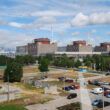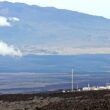Nuclear is uneconomic
By Amory B. Lovins, April 25, 2007
My friend Steve Berry “posits” a supposed need for major nuclear expansion, unsupported by any
analysis. To understand and test his conclusion, one must know what he thinks energy efficiency and
low- or no-carbon energy sources can do, how fast, and at what cost. With basic citations at
Rocky Mountain
Institute’s website (PDF) and basic publications at our
nuclear energy
library, here’s my view:
Existing technologies for more efficient end-use can save three-fourths of U.S. electricity
at an average cost of around 1 cent per kilowatt-hour–cheaper than running a coal or nuclear power
plant, let alone building one. Scores of utilities have demonstrated and implemented at scale,
rapid, large, predictable, and extremely cheap “negawatts” (saved electricity). California’s
per-capita use of electricity has been flat for 30 years while per-capita real income rose 79
percent. Firms like DuPont, Dow, and IBM are saving billions of dollars by cutting energy
intensity, sometimes as fast as 6-8 percent a year.
My household saves 90 percent of electricity and 99 percent of space and water heating energy
with a 10-month payback using 1983 technology. My team’s redesign of some $30 billion worth of
facilities in 29 sectors normally finds energy savings of 30-60 percent in retrofits (paying back
in about 2-3 years) and 40-90 percent in new installations (typically with lower capital cost). A
detailed road map for eliminating U.S. oil use by the 2040s, led by business for profit (“Winning the Oil Endgame”), shows how to
save half of U.S. oil and gas at average costs one-fifth and one-eighth of current prices.
Implementation is already underway. And each of the 60-80 known obstacles to implementing energy
efficiency can be turned into a business opportunity.
On the supply side, “micropower”–small-scale generation that emits little or no carbon
dioxide–provided one-sixth of the world’s electricity and one-third of its new electricity in
2005, meeting from one-sixth to more than one-half of all electrical needs in 13 industrial
countries. The smaller of micropower’s components, distributed renewable sources of electricity,
was a $56 billion global equipment market in 2006, while the larger, combined-heat-and-power, was
probably even larger. Micropower added four times the electricity and 8-11 times the capacity that
nuclear power added globally in 2005, now produces more electricity than nuclear power does, and is
financed by private risk capital. Micropower plus “negawatts,” which are probably about as big, now
provide more than half of the world’s new electrical services.
Nuclear power is unnecessary and uneconomic, so we needn’t debate its safety. As retirements
of aging plants overwhelm construction, global capacity and output will decline (as they did
slightly in 2006). Most independent analysts doubt the private capital market will finance any new
nuclear plants. Even in the United States, where new subsidies would roughly repay the next six
units’ entire capital cost, Standard & Poor’s said this wouldn’t materially improve the
builders’ credit ratings. I expect this experiment will be like defibrillating a corpse: It’ll
jump, but it won’t revive.
Nuclear power’s market meltdown is good for global development: Saving electricity needs
around 1,000 times less capital and repays it about 10 times faster than supplying more
electricity. Shifting capital to saving electricity can potentially turn the power sector (now
gobbling one-fourth of global development capital) into a net funder of other development needs.
Further, an efficient, diverse, dispersed, and renewable energy system can make major supply
failures, whether caused by accident or malice, impossible by design rather than (as now)
inevitable by design.
The nuclear phaseout will also speed climate protection, because buying negawatts and
micropower instead will save 2-10 times more carbon per dollar, and will do so more quickly. And it
can belatedly stem nuclear proliferation, too, by removing from commerce a vast flow of ingredients
of do-it-yourself bomb kits in civilian disguise.
This would make bomb ingredients harder to get, more conspicuous to try to get, and far
costlier politically if caught trying to get, because the motive for wanting them would be unmasked
as unambiguously military. Focusing intelligence resources on needles, not haystacks, would also
improve the odds of timely warning. All this wouldn’t make proliferation impossible, but it would
make things far more difficult for both recipients and suppliers.
Thus, acknowledging and accepting the market collapse of nuclear power is an important step
toward a fairer, richer, cooler, and safer world.
Share: [addthis tool="addthis_inline_share_toolbox"]














